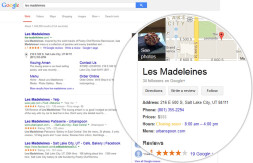Five Common Email Marketing Errors That Damage Holiday Promotions

Forecasters predict that this year, shoppers will spend an average of $684 per household on holiday purchases. Since there is stiff competition for every piece of that pie, companies that want a slice need to carefully examine and plan all aspects of their holiday promotions. When reviewing your 2014 plans, make sure you don’t make these common mistakes with your email marketing.
1. Acting Like its 2006. Remember the good old days of testing an email by simply sending it to yourself? Now, testing an email on a desktop screen only is like going to Blockbuster to rent a video – it’s a nice memory of a different time. With today’s overwhelming popularity of tablets and phones, you must test your emails across multiple devices. In fact, researchers say that nowadays, approximately half of all emails are opened on mobile or tablet devices. So make sure that the customers who open your emails on tablets and phones see a nice layout too!
2. Using Text Links, Rather Than Buttons, for Your Calls to Action. Multiple studies have consistently shown that response rate is higher when buttons are used for a call to action in emails, as compared to text links. Buttons stand out more and catch our eyes even when we scan emails. Plus, they offer another opportunity to extend your branding in your emails or add some holiday fun to your buttons.
3. Long Email Subject Line. Regardless of your amazing website, your incredible deal, and your beautifully crafted email content, if nobody opens your email all is for naught. Remember that the entire job of the subject line is to pique interest rather than explain the entire promotion, so don’t get too wordy! MailChimp’s recent research reports that the ideal subject line length is 50 characters or less. Take your time to craft and refine an informative subject line that teases.
4. Promoting Only Once, or Not Enough. Of course you don’t want to spam your customers, but sending a single email about a holiday promotion is not likely to break through the noise that customers face when reviewing their inboxes during the holidays. At minimum, after sending your email blast, send a reminder email to let customers know when your deal is going to expire. If a promotion lasts for more than a week, consider sending another email with a new enticing subject line and message somewhere in the middle of your timeline.
5. Failure to Split Test. Split testing allows you to get feedback on the effectiveness of your subject lines and your offers (free shipping vs. a percentage off vs. buy one get one free). When you’ve learned what is converting better by testing, only then you should go Primetime. Indeed, it takes some extra effort, but the holiday season is such a potentially profitable time of year, that now is the time to be on your best marketing behavior!
Don’t let these mistakes cost you this holiday season!














